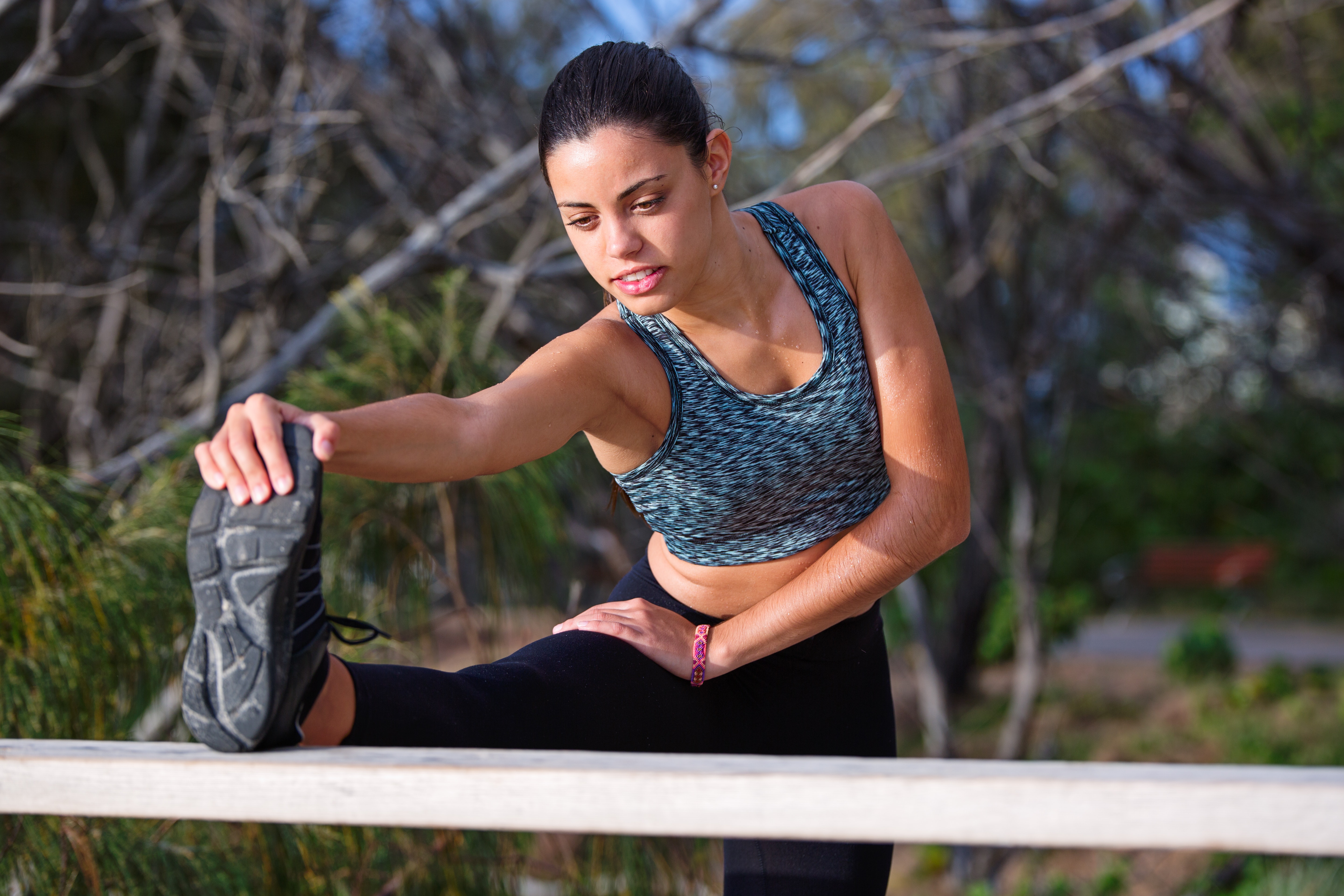
by Brian Baxter
You’re at the end of a tough workout and are pushing hard. 5, 4, 3, 2, 1, finished! The hard work is over and it’s time to head home. Not so fast! All of that hard work will go to waste without a cool down stretching period. In fact, your post workout routine is just as important as the exercise itself.
Our muscles need time to repair, and stretching helps to keep our bodies flexible and mobile after straining them through a workout. Moreover, stretching actually helps with muscle gain because it allows you to go deeper with your exercises. Skipping this crucial post-workout step can lead to muscle and tissue damage and unnecessary discomfort in your body.
Types of Stretching
There are many types of stretching, but static stretching and dynamic stretching are the two most common and popular forms today.
While static stretching is highly recommended post-workout, dynamic stretching can be performed both before and after a session.
Let’s take a closer look at the differences between these two options before we dive into the 6 best stretches for recovering after your workout.
Static Stretching
Static stretching means that you hold your body in one position for a set amount of time – usually between 10 to 30 seconds. The stretch should feel difficult but comfortable. The overall goal of static stretching is increased flexibility. It’s safe, easy and the most common type of stretching. The best part about static stretching is that you’re most likely already familiar with these poses.
Static stretching is recommended mostly for post-workout cool downs. The idea is to hold your body in one semi-challenging position for an extended period of time after your muscles are already warmed up. When a workout is finished, static stretching is crucial to preventing injury and for muscle recovery.
In fact, research now says that static stretching pre-workout can actually be harmful to performance, because it limits your body’s ability to react quickly when exercising or playing a sport.
Dynamic Stretching
Dynamic stretching is the act of stretching through movement. The range of motion should be challenging yet comfortable, as is the premise for all stretching positions.
While less common post-workout, it’s the preferred method of pre-workout stretching for many athletes, personal trainers, sports camp organizations, and physical therapists because of its benefits in improved range of motion.
Dynamic stretching movements should be controlled and smooth. The idea is to move your body through a full range of motion in order to increase muscle temperature and decrease stiffness. While dynamic stretching is generally favored pre-workout, there are some lower-impact dynamic stretches that can be completed post workout.
The 6 Best Stretches For Post-Workout Recovery
We’ve compiled a list of the 6 best stretches for cool down and recovery after your workout. Because static and dynamic stretching types are both so important for your body, we’ve chosen 4 static and 2 dynamic stretches for your post-workout routine.
Let’s take a look at the 6 best stretches for your post-workout recovery:
1. Neck Stretch (Static)
In a sitting position, reach your right arm over your head and place your hand over your left temple.
Gently pull your head towards your right shoulder until you feel a stretch.
Repeat on the opposite side.
2. Cross-body Shoulder Stretch (Static)
While standing or sitting tall, extend your right arm to over your chest towards your left shoulder.
Grab your arm with your left hand and pull it towards your chest to feel a stretch.
Repeat on the opposite side.
3. Triceps Stretch (Static)
Lift your left arm over your head and bend it towards yourback, placing your left hand on your upper back.
Use your right hand to pull your elbow back until you feel a stretch.
Repeat with the right arm.
4. Side Stretch (Static)
Stand with your feet hip width apart and extend your right arm straight above your head.
Lean your body left and reach your right arm towards your left side.
As your body bends you should feel a stretch on your right side. Repeat on the left side.
5. Hip Bridge (Dynamic)
While lying on your back, bend your knees and keep your feet on the ground hip width apart.
Slowly lift your hips up towards the sky while contracting your abs. You should feel a stretch in your hips, lower abdominals and groin.
Hold for up to 10 seconds and then repeat.
6. Hamstring Stretch with Rope (Dynamic)
While lying on the ground with bent knees, place a rope around the bottom of your foot and pull one leg up towards your head.
Make sure to keep both hips on the ground and pull until you feel a stretch in your hamstring.
Repeat with the other leg.
Conclusion
Stretching, pre and post-workout, is critical to your performance and keeping your muscles healthy and injury free. While static and dynamic stretching are equally important in your overall routine, you should focus more on static stretching for your post-workout recovery.
(Brian Baxter is the founder of Baxter Sports Camps and an athlete, coach, parent, and sport psychology consultant with over 20 years experience in youth sports. He established Baxter Sports to provide a great environment for athletes to learn and grow in all aspects of life.)





